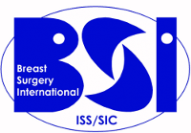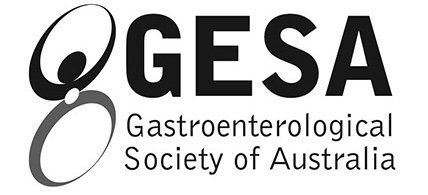
HERNIA SURGERY
About Hernia
A hernia occurs when the internal organs of the abdominal cavity push through a weakened spot in the abdominal wall to form a bulge.
Hernias may be repaired surgically by closing the defect and using mesh to strengthen the weakened area. This can be performed in a minimally invasive manner using a laparoscope.
Hernia Disease
An inguinal hernia is a bulge that forms when a part of your small intestine or fatty tissue protrudes through a weak spot in the groin or into the scrotum or testicular sac.
A femoral hernia develops just below the lower abdomen and upper thigh, near the groin crease or skin folds around the vagina. The bulge pushes into the femoral canal through which nerves and blood vessels run into the thigh region.
Inguinal hernias commonly occur in men while femoral hernias are uncommon and mostly seen in women.
Hernias generally do not cause any symptoms but may be discovered on a routine medical exam. Symptoms may include pain, aching, discomfort, or heaviness in the groin. The bulge formed is more prominent when you stand, cough or strain, and may disappear while lying down as it slips back into the abdomen.
A hernia can sometimes become trapped or strangulated and cannot be pushed back into the abdomen. This is referred to as an irreducible hernia. It is a dangerous situation where the blood supply to a hernia is compromised and may require emergency surgery.
Indications for Hernia
Small hernias that do not cause any symptoms are usually not treated but instead your doctor may follow a wait-and-watch approach.
Surgery is recommended for hernias that show symptoms, are enlarged or entrapped. Surgery may involve an open hernia repair with a larger incision or laparoscopic surgery, a minimally invasive approach with smaller incisions.
Laparoscopy is especially advised for patients with recurrent hernias, bilateral inguinal hernias and femoral hernias. However, it is not recommended for patients with very large hernias, strangulated hernias, prior pelvic surgery and intolerance to general anaesthesia. These would typically require an open approach.
Video below showing Laparoscopic Mesh Repair
Video below showing Laparoscopic Mesh Repair
Surgical Procedure
Laparoscopic hernia repair is performed under general anaesthesia. Your surgeon will make a few small incisions in your abdomen or groin through which a thin tube called a laparoscope and other special instruments are inserted.
A video camera attached to the laparoscope sends magnified images to a monitor guiding your surgeon throughout the procedure. Your surgeon will push the bulge back into the abdomen and either stitch the abdominal wall or use a mesh to support the weakened wall.
Post-Operative Care
Laparoscopic repair of an inguinal or a femoral hernia is usually performed as an outpatient procedure so you will return home as soon as you recover from anaesthesia. You may have some swelling or bruising at the incision sites which is normal.
Pain and swelling are mostly controlled with medications. It is important to avoid strenuous activity or heavy lifting for at least 2 weeks after the procedure.
Advantages & Disadvantages
Laparoscopic hernia repair is a minimally invasive procedure and as such is associated with less tissue damage and pain and a faster recovery compared to the open approach.
This surgical approach allows you to return home the same day and get back to your regular activities sooner.
Risks and Complications
As with any surgery, complications may occur. Complications related to laparoscopic hernia repair include:
- Groin pain due to nerve injury
- Infection at the incision site or mesh
- Blood or fluid accumulation
- Urinary retention
A hernia repair is usually performed as an outpatient surgery with no overnight stay in the hospital.
The operation may be performed as an
- Open Surgery
- Keyhole Surgery - laparoscopic
There are two types of laparoscopic surgery these are: The most commonly used laparoscopic surgical techniques for hernia repair are:
- transabdominal preperitoneal (TAPP) and
- totally extraperitoneal (TEP) repair.
OPEN HERNIA SURGERY
About Open Hernia Surgery
To treat a hernia, your doctor may push the hernia back into its normal location and have you wear a belt to hold the hernia in place.
However, surgical repair is recommended for hernias that cause pain and other symptoms, and for irreducible hernias (structures cannot be returned to their normal locations) that are incarcerated or strangulated. Surgery aims at closure and repair of the muscle wall through which the hernia protrudes.
Open Surgery
Open surgery, also called Herniorrhaphy, for hernia can be done under general or local anaesthesia. Your surgeon makes an incision of about 5-10cm long (depending on the size of the hernia) to view and access the surgical site.
Your surgeon pushes the part of the intestine that protrudes back into its normal position and repairs the weakened muscle layer by sewing the edges of the healthy muscle wall together.
A synthetic mesh is often placed and sewn over the weakened area to provide additional support and strength, by a procedure called hernioplasty. The incision is closed after the procedure using dissolvable stitches.
Post-operative Care
Following surgery, you
- Can take a shower only after 48 hours post-surgery
- Can go home the day of the procedure
- Should avoid driving while taking pain killers as they induce drowsiness
- Can resume daily activities slowly while strenuous activities should be resumed only after consultation with your surgeon
- Use ice pack on the wound to reduce pain, prevent swelling and to lessen bloody discharge from the incision if present
- Recover in about 3 weeks
Risks and Complications
Like most surgical procedures, hernia repair is associated with the following risks and complications:
- Reaction to anaesthesia
- Infection
- Bleeding at the operation site
- Nerve damage and numbness of the skin
- Damage to surrounding tissue
Although the recurrence of hernias is seen in less than 5% of patients after surgery, you would need to follow preventive measures.
LAPAROSCOPIC HERNIA SURGERY
Why Consider Laparoscopic hernia surgery
Laparoscopic hernia surgery is a surgical procedure in which a laparoscope is inserted into the abdomen through a small incision. The laparoscope is a small fibre-optic viewing instrument attached with a tiny lens, light source, and video camera.
About Laparoscopic Hernia Surgery
Laparoscopic surgery is performed in a hospital operating room under general anesthesia. The procedure involves the following:
- A camera attached to the laparoscope displays the image of the abdominal cavity on a screen.
- The surgeon makes three small incisions over the abdomen to insert the balloon dissector and trocars (keyholes).
- A deflated balloon along with the laparoscope is inserted and the balloon is inflated with a hand pump under direct vision.
- Once the trocars (keyholes) are placed, the keyhole instruments are then inserted to repair a hernia.
- A sheet of mesh is inserted through the top keyhole and positioned and fixed in the abdominal wall to reinforce the repair and help prevent recurrent hernias. After completion of the repair the CO2 gas is evacuated and the trocars are removed and the tiny incisions are closed and dressed with a sterile bandage.
Indications And Contraindications
Indications for laparoscopic hernia repair over open repair may include recurrent hernias, bilateral hernias, and the need for an earlier return to full activities.
Contraindications specific to laparoscopic hernia surgery include non-reducible inguinal hernia, previous peritoneal surgery, and inability to tolerate general anesthesia.
Medical conditions including upper respiratory tract or skin infection and poorly controlled diabetes mellitus should be fully addressed and the surgery should be delayed accordingly.
Advantages Over Open Surgery
- Less postoperative pain with smaller incisions and faster recovery
- No further incisions required for patients with hernias in both groins (a bilateral hernia)
- The ideal method for patients with recurrent hernias after previous surgery
- Early discharge from hospital
- Earlier return to work
Complications With Laparoscopic Hernia Surgery
Specific complications of laparoscopic hernia surgery may include
- local discomfort and stiffness,
- infection,
- damage to nerves and blood vessels,
- Bruising, and blood clots,
- wound irritation and
- urinary retention.
Post-operative Guidelines
- Pain medication will be provided and should be taken as directed.
- Remove the bandage after 24 hours.
- See GP for wound review after 5 days
- Swelling in the groin, at the site of a hernia may occur due to serum accumulation in the cavity left by reducing the hernial sac.
- Bruising usually appears in the genital area, which is not painful and disappears over 1-2 weeks.
- You are able to drive usually in 1-2 weeks time and resume normal activities when comfortable unless otherwise instructed.
- Make a follow-up visit approximately 2 weeks after surgery to monitor your progress.
The most commonly used laparoscopic surgical techniques for hernia repair are
- transabdominal preperitoneal (TAPP) and
- totally extraperitoneal (TEP) repair.
TAPP Repair
Transabdominal Preperitoneal (TAPP) Repair surgery is a minimally invasive surgical procedure is performed under general anaesthesia.
Your surgeon makes a small incision beneath the navel. A needle is inserted through the incision and the abdomen is filled with gas. This allows your surgeon to view the internal organs clearly.
The needle is removed and a camera is inserted through the incision. Further, 2 more incisions are made near the navel to introduce the surgical instruments. The peritoneum (a membrane that lines the abdominal cavity) is cut and the hernia sac is removed carefully.
A synthetic mesh is placed over the peritoneal opening and then closed with sutures. The disadvantage of the TAPP procedure is it can cause injury to adjacent abdominal organs. The advantage of the TAPP procedure is that it can be performed on patients who have undergone previous lower midline surgery.
TEP Repair
Totally Extraperitoneal (TEP) Repair Surgery is also performed under general anaesthesia. Your surgeon makes small incisions below the navel. A balloon is placed in the preperitoneal space (space between the peritoneum and anterior abdominal wall) and filled with gas to separate the layers.
The camera and the surgical instruments are passed through the incisions. Your surgeon exposes the hernial sac, repositions it and seals the hernia with a synthetic mesh. The incisions are then closed with sutures.
The mesh slowly gets incorporated with the tissues of the abdominal wall. The advantage of TEP procedure is that it prevents the risk associated with damage to the internal organs as it is performed outside of the peritoneum.
As with all surgical procedures, TEP and TAPP hernia repair may be associated with certain complications, which include infection, bleeding, swelling and damage to the adjacent organs.
















